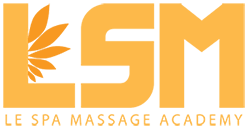Upper Cross Syndrome refers to the deformity of the muscles of the shoulders, neck, and chest. This postural distortion pattern can lead to imbalances of muscle tone or timing and poor movement patterns, and hence increased stress on the head, neck and shoulder joints. The chest-front muscles become shortened and tight. Some muscles become overactive while the surrounding counter muscles become underused and weakened.
The name is from the “x” shape that develops when regions of overactive and underactive muscles overlap.
The Symptoms Of Upper Cross Syndrome?
Symptoms Of Upper Cross Syndrome can range from:
- Forward head carriage
- Increased inward curvature of the cervical spine (hyperlordosis).
- Increased outward curvature of the thoracic spine (hyperkyphosis or “humpback”) .
- Breathing dyfsunction caused by over-activated muscles and compression of the rib cage.
- Rounded shoulders and rotator cuff issues
- Winging of the scapula- the shoulder blades jut out instead of lying flat against the ribcage.
- Chronic pain in the affected muscles.
- Migraines and tension headaches
- Pins and needles or tingling in the arms
Due to lower thresholds for irritation and dysfunction of affected muscles,leading to faulty movements that cause more pain and problems. Further pain could be caused by stresses on the involved joints. Poor posture can be said to be contagious, starting in one area and then affects another, then one another.
What Are Common Causes Of Upper Cross Syndrome?
There are many causes of Upper Cross Syndrome, mostly developed over a period of time due to prolonged sitting or standing with the head forward such as using computer and laptop, driving, watching TV, cellphone browsing, texting, app, or play game , reading, biking
In some cases, even injury or congenital disabilities may also play a part.
Which Treatments Are Recommended To Reduce Upper Cross Syndrome?
Usually a combination of soft tissue massage, joint mobilisation, chiropractic care, physical therapy and exercise is recommended.
Soft tissue massage, joint mobilisation
Treatment results are usually not immediate and require time and commitment. The goal of soft tissue massage is to reduce tension and tightness in restricted muscles, improve strength and stability in the weak and inactive muscles to achieve the best response.
Chiropractic care
The tight muscles and poor posture can cause joints to become misaligned. A chiropractic adjustment would help to realign the joints. It also usually stretches and relaxes the shortened muscles.
Physical therapy
A physical therapist offers education and advice and demonstrates practise exercises to continue with at home. Manual therapy can also be used to relieve pain and stiffness and encourage better movement of the body.
Exercises For Upper Cross Syndrome
Upper crossed syndrome can be improved through exercise and postural changes. Though some may cause a lot of discomfort when stretching, therefore warming up tissues before exercising, either with gradual, gentle movements or by having a warm bath or shower. Exercise to improve Upper Cross Syndrome can include lying exercises, sitting exercises and standing exercises.
References
What’s to know about upper crossed syndrome? Medicalnewstoday. Viewed 12 June 2020 https://www.medicalnewstoday.com/articles/318897
Upper Crossed Syndrome: The Personal Trainer’s Guide. Theptdc. Viewed 12 June 2020. https://www.theptdc.com/upper-crossed-syndrome
Upper-Crossed Syndrome. Physio-pedia. Viewed 12 June 2020. https://www.physio-pedia.com/Upper-Crossed_Syndrome

